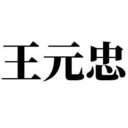Quantitative and Qualitative Characterization of Gentiana rigescens Franch (Gentianaceae) on Different Parts and Cultivations Years by HPLC and FTIR Spectroscopy.
Açar sözlər
Mücərrəd
Gentiana rigescens Franch (Gentianaceae) is a famous medicinal plant for treatments of rheumatism, convulsion, and jaundice. Comprehensive investigation of different parts and cultivation years of this plant has not yet been conducted. This study presents the quantitative and qualitative characterization of iridoid glycosides from G. rigescens performed by HPLC and FTIR spectroscopy techniques. The accumulations of loganic acid, swertiamarin, gentiopicroside, and sweroside were determined. Results indicated that their content and distribution in different parts and cultivation years exhibit great variations. Gentiopicroside was identified as the most abundant compound among iridoid glycosides and its highest level was observed in the root of 2-year-old plant. With respect to qualitative variation of metabolic profile, the 1800-800 cm-1 band of FTIR spectra successfully discriminated different parts and cultivation years with the aid of PLS-DA. In addition, combined with PLSR, the feasibility of FTIR spectroscopy for determination of gentiopicroside was investigated by selecting characteristic wavelengths (1800-800 cm-1), which presented a good performance with a residual predictive deviation (RPD) of 3.646. Our results suggested that HPLC and FTIR techniques can complement each other and could be simultaneously applied for comparing and analyzing different parts and cultivation years of G. rigescens.



